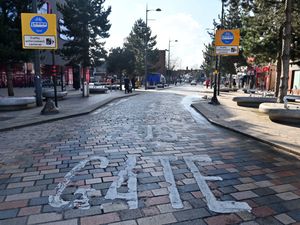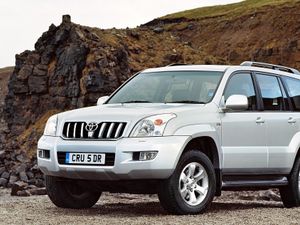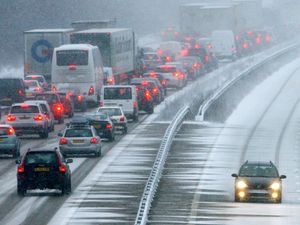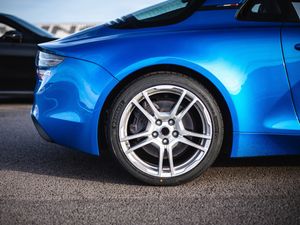How to drive safely and efficiently on motorways
Here are some top tips for using Britain’s motorways
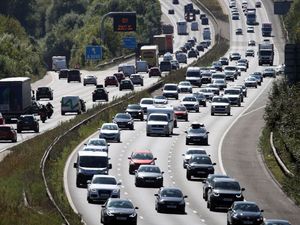
Motorways are statistically the safest type of road in the UK, but they come with higher speeds and greater dangers if you’re not driving suitably.
Whether you regularly drive on a motorway or only occasionally use them for longer trips, it’s always worth refreshing your memory to some of the rules and top tips that can make motorway driving and also more efficient.
Keep your distance

Many collisions that take place on a motorway are caused by drivers tailgating or following the vehicle in front too closely. Driving at the 70mph speed limit on a motorway, the average stopping distance is 75m.
That’s a big distance, and you always need to ask yourself if the car in front comes to an emergency stop, can you do the same? Some motorways have marked chevrons on them to help you keep the right distance, but another method is the ‘two-second rule’. Watch as the vehicle in front passes a marked point, and if you reach the same point under two seconds, you’re driving too closely.
Always use your mirrors and be aware of blind spots

More than any other type of road, it’s vital that you use your mirrors when driving on the motorway when changing lanes. The saying goes, ‘mirror, signal, manoeuvre, and it’s vital that you follow this.
However, it’s worth adding another step into this by turning to look over your shoulder to check there’s no vehicle that you haven’t spotted – particularly small cars and motorbikes. A quick over-the-shoulder will ensure you can safely manoeuvre and have taken full precautions.
Pay attention to the overhead gantry signs on smart motorways

An increasing number of highways across the UK are now what’s known as smart motorways. Though they’ve had much negative press for their dangers, they’re not likely to be ripped up, so it’s important to know how to drive on them.
Typically on a smart motorway, the hard shoulder is removed in place of a fourth ‘live’ lane to ease traffic flow. However, you should pay close attention to the overhead gantry signs, because if a lane has a marked ‘X’ above it, it means you shouldn’t use that lane because there is a hazard there.
Similarly, be aware of the speed limits displayed, which can fluctuate between 40mph and the national 70mph limit. Many gantries have speed cameras on them, which will catch you if you’re breaking the speed limit displayed on the sign or if you’re driving on a marked ‘X’ lane.
Don’t hog the middle lane

One of the most irritating habits on a motorway is when drivers sit in the middle lane. Though you might think it can be an inconvenience to change lanes, or that the outer lanes are for ‘lorries only’ or ‘slow’, this isn’t the case at all.
Sitting in the middle lane when there’s an opportunity to move over not only annoys other road users, but prohibits traffic flow and causes more congestion. You should always remember to keep left unless overtaking.
Take extra care when joining and leaving the motorway

Joining and leaving the motorway can often be some of the most dangerous aspects of using these roads. When joining, it’s important to remember that you need to give way to traffic already on the motorway, and don’t just pull in front of anyone already using it. Similarly, you should make use of the slip road to get your vehicle up to speed. If the traffic already on the motorway is doing 70mph, it can be dangerous if you try and join at a much slower speed.
When exiting the motorway, it’s important that you move to the left-hand lane well before the junction. Signs start appearing a mile before an exit, so as soon as you see these, it’s time to prepare your vehicle so you can safely exit. Darting across at the last minute is dangerous and can cause collisions and other drivers to slam on the brakes.
Know what to do in the event of a breakdown

The last thing you want to happen when on a motorway is for your car to break down. But should the worst happen, it’s important to know what to do. On routes with a hard shoulder, you should always pull up here, come to a stop with your hazard lights on, and get out of the vehicle as quickly as possible, when it’s safe to do so, and get yourself behind the crash barrier and away from the car.
On a smart motorway, as soon as there’s a problem you should move to the left lane and put your hazard lights on. If your car can still run under its own steam, you should try to reach a service area, or to an emergency refuge area, which are designed to offer a ‘safe haven’ and are spaced every 1.5 miles. You can then call Highways England on the phone provided in these areas.
If your vehicle won’t get to one, move as close to the verge as possible, and if you can get everyone out of the car safely, consider exiting out of the left door and get yourself behind a barrier. You should call 999 immediately in this instance.
Never drive tired

If you’re doing a longer run, it can be all too easy to just ‘crack on’ and try and get to your destination as quickly as possible. But you should always remember to take regular breaks, such as every couple of hours to have a brief rest and top up on drinks and refreshments. If you don’t do this, it can cause excessive tiredness and compromise your safety and that of other road users.
With rules recommending that services should never be placed more than half an hour apart, you should never be too away from a rest area.

